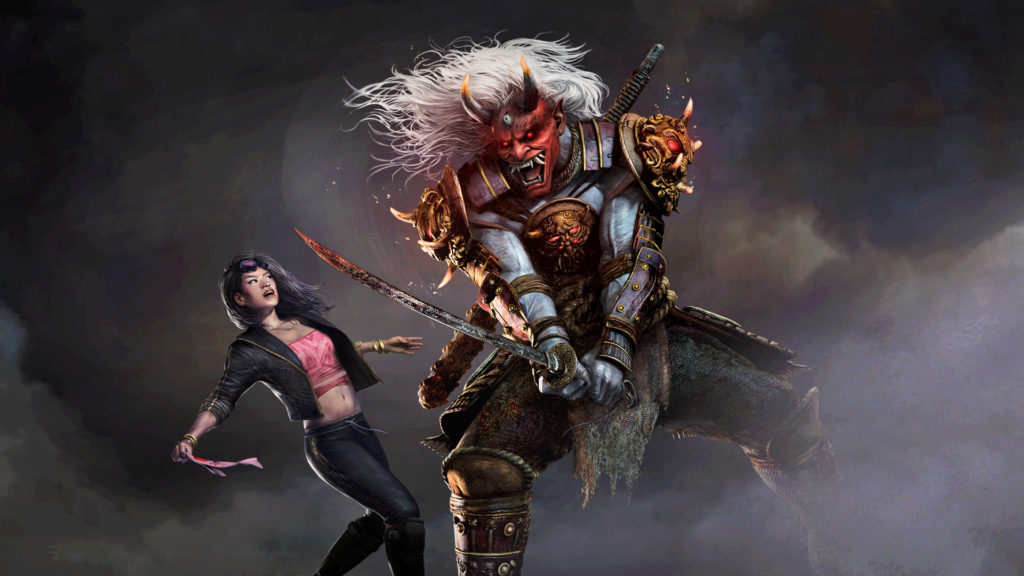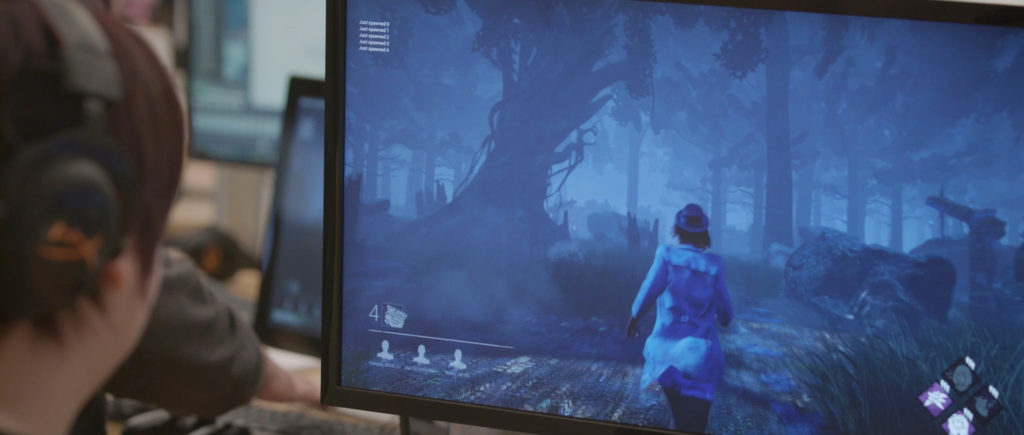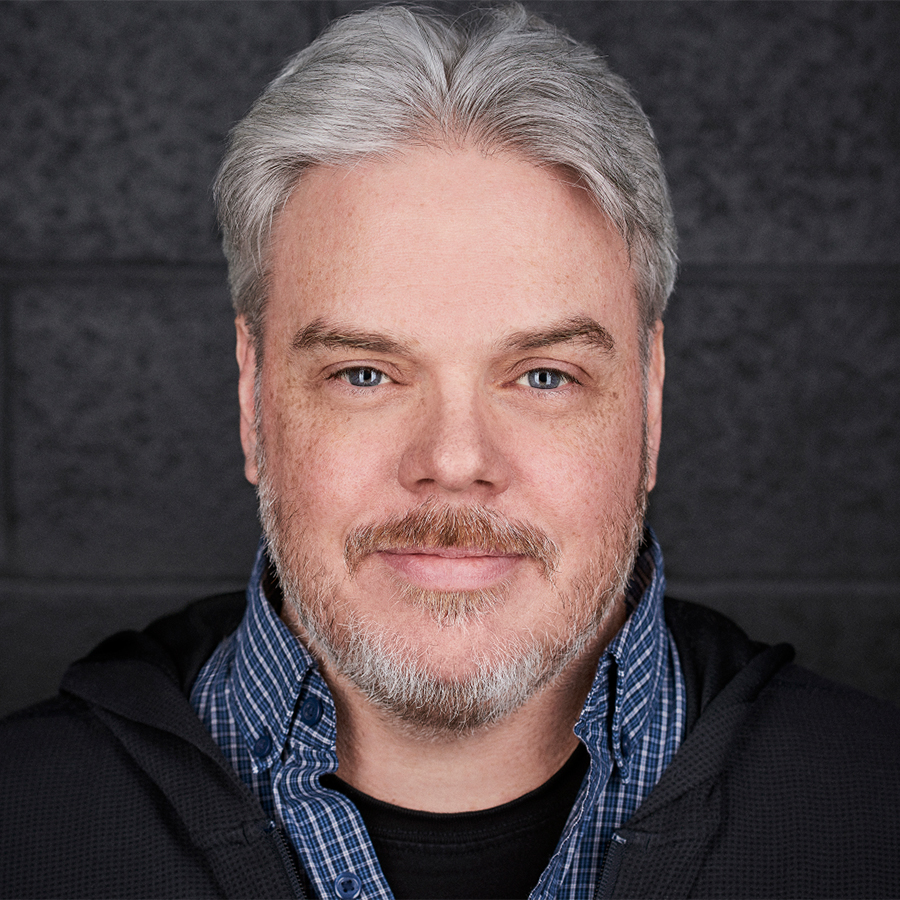MAKING GAMES
Q&A with Behaviour’s EVP/CTO Stephen Mulrooney
Germany’s Making Games magazine recently profiled Behaviour Interactive and our Live Operations. This Q&A with Executive Vice-President and Chief Technical Officer, Stephen Mulrooney, was the first article in the series, which we are republishing here with permission.
Stephen Mulrooney’s path to leading the creation of original games at Behaviour Interactive began at the age of eight when he spent a summer playing with his neighbour’s Magnavox Odyssey 2. He got the bug for software development soon after by copying type-in programs from magazines into his Commodore 64. As Executive Vice-President of Behaviour Digital, Stephen oversaw the creation of the studio’s hit asymmetrical horror multiplayer, Dead by Daylight, and is responsible for its ongoing development. Stephen also serves as Behaviour’s Chief Technical Officer, a position he has held since 2013.
Please tell us briefly about your career in the gaming industry.
Stephen Mulrooney: I started off as a programmer at Ubisoft Montreal in 1997. I stayed there for about three years and worked on a couple of games. I was mainly in technology roles and the engine team. I left around 2000 for Behaviour, where I started as a programmer on the engine team and spent about 10 years with Behaviour’s Central Technology group. I eventually moved over to production and took on more senior advisory/managerial roles and was named Chief Technical Officer in 2013. In addition to CTO, I’m also the person who’s in charge of our original games. Currently, this is primarily Dead by Daylight but we have more stuff to come. We’ll be able to talk about that soon.
How big is the Dead by Daylight development team?
Stephen: The Dead by Daylight development team is 257 people. That includes the Dead by Daylight core team, people working on the mobile version of the game, people working on the data team and our backend services team.
Are there also complete remote workplaces? Or should one necessarily live in Montreal to be able to work with you?
Stephen: We do have people who work remotely and, of course, in the pandemic we’ve had to adapt and we’ve gotten better and better at working remotely with each other. The biggest constraint isn’t really distance anymore, but time. It’s really difficult for someone to have to rearrange their schedule to be on the Eastern Time Zone with the rest of us. If they have to get up really early in the morning, sure, or work until later at night if they’re in Europe, for example. I think it’s a bit more challenging, but some people are doing that.

How technically demanding is it to develop an asymmetric game that combines first-person and third-person perspectives?
Stephen: It’s technically demanding in the sense that you’re essentially creating two completely different game modes. So, whatever character, control and camera (3C) work goes into a non-asymmetrical game, you have to double that up. You have to do it twice. It’s something that seeps into almost every aspect of the game. So, Dead by Daylight is really two different games – it’s a killer game, and a survivor game. And each side creates content for the other side. That’s kind of the lynchpin or the keystone to making all of that work, so you can’t skimp on one side or the other. Both experiences need to be smooth and feel great. So, it really is double the work. That’s probably the biggest technical challenge of that aspect.
There are also technical challenges in terms of matchmaking. We made the decision early on that we would not force the player into a certain role. A lot of games that are asymmetrical will match a group of people and one of them would be elected to a certain role. In the case of Dead by Daylight, that would mean matching five people together and electing one person as the Killer. If that person wanted to play the Killer, that’s great. But if they didn’t, that sucks. And if someone really only wants to play the Killer, but doesn’t get to, that also sucks. Dead by Daylight takes a different tack: we wanted to make sure that player choice was really at the forefront of everything. If you want to play a Killer, that’s all you have to do. Same thing if you want to only play a Survivor. I think it’s important to respect the player’s choice.
What problems did you encounter in general? And how did you deal with them?
Stephen: Early on, we were especially worried about matchmaking, as I just mentioned. That kind of matchmaking only works after a certain scale. So, we worried about making sure we have enough players, but that turned out to be not a concern. We’ve been fortunate to always have a lot of players playing and engaging with the game – thank goodness for that. Of course, there have been other challenges along the way. We’ve had to find ways to keep players engaged, to keep people interested in what we’re doing. We change the meta of the game as often as we can. We’d like to say that we try to break the game, in a good way, with every Killer. And we’ve done that many times now with some success.
I think one of the things that we wanted to make sure we had was a sort of continuous loop: people could continue to improve and enjoy the game and work towards things. The Blood Web was a big part of that – people can continue working on their character and getting better and acquiring new consumable items to use. More recently we added the Archives and people can work through that. I think that finding interesting ways to keep people engaged and entertained has always been a challenge and we keep trying our best to make sure that people are engaged and entertained.

Which engine do you use and why is it just right for Dead by Daylight?
Stephen: We use Unreal Engine 4 (UE4), and it was just right for Dead by Daylight for a number of reasons. When we launched Dead by Daylight, we chose to have listen server rather than dedicated servers, which is to say that the Killer was going to host the game for all the Survivors. Unreal Engine has very robust listen server code. It was very easy for us to set that up and get it up and running. And it really worked well. When we launched the game, we wanted to make sure that it was never going to go away so we chose simple technology at first. UE4 had a great track record with listen servers. Of course, over time, we changed to dedicated servers and we built our own matchmaking system and replaced the one from Steam. So, we’ve grown and invested in the game over time. But at launch, UE4 was the best choice for that. Obviously, UE4 has great graphics and we’ve had a great time on the art side making a lot of really cool content inside UE4 and that was another reason why it was a great choice.
In August you introduced the Cross-Play feature in Dead by Daylight – how complex was it to implement it? What are the challenges?
Stephen: Most technical hurdles are, honestly, solved through dedicated servers. Servers provide consistent network and CPU performance compared to listen servers, which could be on poor quality Wi-Fi networks or on devices with lower-end CPUs. The biggest technical challenge is making sure your backend services scale with the increased load that a single pool of players brings. Matchmaking can be a particular challenge, especially in an asymmetrical game like Dead by Daylight, so we ran a lot of load tests to make sure everything would scale.
Logistically, the biggest challenge is managing the simultaneous release of all those platforms, getting everything stable, QAed, approved, and released on eight platforms is something we’re still learning how to do well. We also had to meet all the platform holder’s requirements like making sure to identify players that are not from the network, but that was pretty simple.

You have just released the Oktoberfest Collection. Have you ever been to the Oktoberfest?
Stephen: Unfortunately, no. I’ve been to Germany once and I really liked it. It was beautiful. I went to gamescom a couple of years ago and it was an amazing experience. There were so many people there – it was probably the biggest show I’ve ever been to. Yeah, I loved Germany from the little that I saw. But, unfortunately, I’ve never been to Oktoberfest.
You recently released Dead by Daylight for Google Stadia and added two exclusive features: Crowd-Play and Crowd-Choice. What is that all about?
Stephen: Crowd-Choice allows the community to vote and influence their favourite YouTube streamer’s match. Viewers can choose whether the influencer will play as a Killer or a Survivor, and then which character is played.
Crowd-Play on Stadia will also allow streamers on Youtube to invite their community to join in on a trial with the touch of a button. This feature isn’t released yet, but we’ll hopefully see it really soon.
You are currently working on versions for PS5 and Xbox Series. How much work will it take to port your game to the next-gen consoles? Can you give our readers who are facing a similar task some tips?
Stephen: It was relatively easy to do on an up-port. It always is – it’s harder to go from a higher gen to a lower gen. That can be very, very challenging. But porting from one gen to the next – going from eighth to ninth gen, for instance – is relatively easy. The actual machines are becoming more and more PC-like – the hardware is similar, even if the APIs are a little bit different.
In terms of advice, I think what’s important is to get it running on hardware as soon as possible. If your game is finished and all you’re doing is working on the port, then that’s one thing. But if you’re working on a port at the same time as you’re working on the game, my main advice is to make sure that you get it running on the hardware, be it Series X or PS5, as soon as possible.
And start QAing it as soon as possible too, so that there are fewer surprises in your future. You want to frontload those as much as you can. Because there’s always going to be something – stability issues, crashes, pseudo-random errors that you’re going to have to track down — and the more calendar time you’ll have with those, the better off you’ll be.
What do you think about the new consoles from a technical point of view?
Stephen: They’re great. They’re really exciting. I can’t wait to see what we do with them. I mean, the way the industry has worked in the last couple of generations is that consoles kind of set the minimum technical bar. So, every time there’s a new version of consoles out, everything in the industry sort of advances in state of the art. PC games get better, as well. So, I’m really looking forward to seeing what people come up with.
They have very, very fast SSDs now so it’ll be really interesting to see what kind of innovation people push from that. Now that we’re leaving the sort of magnetic media behind, it’ll be really interesting to see what kind of great games people can make when they have the assumption that there’s an SSD in every machine.

For Germans who have had to fight for years for state funding for game development, Canada seems like a paradise for game developers. Does it also feel like paradise for you?
Stephen: We’re incredibly lucky to have supportive governments in Canada, and especially in Quebec. We’ve been supported and Montreal is an example of a success story in the game industry. Twenty-three years ago, Montreal was relatively small in the game industry and, thanks to the government support, it’s now really one of the powerhouses, one of the largest development cities in the world.
I think it’s an example to be followed by any government that is looking to help nurture and help create an industry hub like Montreal where thousands of people make a living following their passion.
How much does the Coronavirus crisis affect you?
Stephen: In two ways. First of all, obviously, it affects how we work. We’ve had to learn new ways of working. My experience has been that team leads, frontline managers, have taken a lot of the brunt of adapting to the Coronavirus crisis. It’s been very hard for them and I really appreciate all the work that they’ve been doing and the communication challenges they’ve had to overcome. Making sure they keep in touch with the team and keep everybody moving in the same direction is incredibly difficult and I really admire them for it. Obviously, everyone else is adapting, too, but I think that there’s been a lot of pressure on the frontline leaders.
It’s also affecting me personally. I have a lot of friends and family who are having trouble and it’s hard for them to adapt; they’re very social creatures and they miss all their friends, they miss the get-togethers. So, they’re filled with a lot of stress and anxiety. For me personally, I’m an incredibly introverted person so it hasn’t affected me all that much, except when I talk to my friends and I hear how hard it is for them. And that’s really, really difficult. So, in one way I’m kind of lucky that I’m not wired in a very social way, but at the same time I have a lot of people I care about who are and I’m anxious about their mental health.
Is there anything you want to share with other developers?
Stephen: I’m a big fan of games. Before I started in the game industry 23 years ago or so I was a big fan of games. I’m always looking forward to seeing the next thing that is coming from a crazy indie developer with some amazing concept they want to put out there. I just want to see people keep making amazing games and keep surprising me and everyone else in the world. I can’t wait to see what the industry has in store for us next.

Stephen Mulrooney
EVP and CTO









